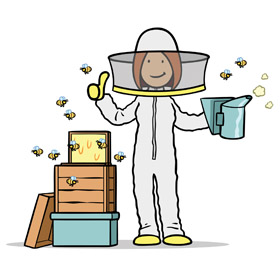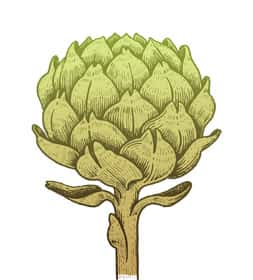Save the Bees!
 “If the bee disappeared off the face of the Earth, man would only have four years to live,” is a quote usually attributed to Albert Einstein. An epidemic is wiping out honeybees in California and the nation. Bee populations have been declining significantly over the past 25 years, and a substantial and growing body of evidence points to neonicotinoid pesticides as a key factor. California has a special responsibility to respond to the threat—the state’s agricultural production accounts for more food than any other state in the nation.
“If the bee disappeared off the face of the Earth, man would only have four years to live,” is a quote usually attributed to Albert Einstein. An epidemic is wiping out honeybees in California and the nation. Bee populations have been declining significantly over the past 25 years, and a substantial and growing body of evidence points to neonicotinoid pesticides as a key factor. California has a special responsibility to respond to the threat—the state’s agricultural production accounts for more food than any other state in the nation.
Grown Only in California Crops
While California produces 13 percent of the total cash agricultural receipts for the U.S., it is the sole  producer—99 percent or more—for the following crops:
producer—99 percent or more—for the following crops:
Almonds
Artichokes
Figs
Kiwi fruit
Olives
Peaches
Pomegranates
Plums
Pistachios
Dates
Raisins
Sweet Rice
Walnuts
Sources: United States Department of Agriculture, California Agriculture Statistics Review
Does Legal Cannabis Lead to Higher Taxes?
The cannabis cultivation tax and excise tax went into effect on January 1, 2018. Here’s a brief overview of the new tax rates and how they apply to cannabis business activities, according to the California Department of Tax and Fee Administration.
Cultivation Tax. Cultivators are responsible for paying the cultivation tax on all harvested cannabis entering the commercial market to the distributor (or to the manufacturer if that is where the first transfer or sale of unprocessed cannabis takes place). Manufacturers who collect the cultivation tax are required to pay the tax to the distributor. The distributor reports and pays the cultivation tax to the California Department of Tax and Fee Administration (CDTFA). The current cultivation tax rates are $9.25 per dry-weight ounce of cannabis flowers, and $2.75 per dry-weight ounce of cannabis leaves.
Excise Tax. Both cannabis and cannabis products are subject to an excise tax. Retailers are responsible for collecting the cannabis tax at the time of the retail sale and for paying the tax to the distributor, who reports and pays the cannabis excise tax to the CDTFA. The current excise tax rate is 15 percent of the “average market price” when purchased at retail. The average market price is the wholesale cost of the cannabis or cannabis products sold or transferred to the retailer, plus a mark-up predetermined by the CDTFA. In some cases, the average market price is the retailer’s gross receipts from the retail sale. The current mark-up rate is 60 percent. The CDTFA is required to determine the mark-up rate every six months, and is posted on its website at www.cdtfa.ca.org.
Sales and Use Tax. Sales and use tax applies to retail sales of cannabis and cannabis products after the excise tax has been added. Sales and use tax does not apply to sales of medical cannabis and cannabis products when a purchaser provides a Medical Marijuana Identification Card issued by the California Department of Public Health and a valid government identification card.
Cannabis Tax Permits/Seller’s Permits. Cannabis retailers, cultivators, manufacturers and distributors making sales must register with the CDTFA for a seller’s permit. Distributors must register with the CDTFA for a cannabis tax permit to report and pay the cultivation tax and cannabis excise tax.
Author
-

Bill Meagher is a contributing editor at NorthBay biz magazine. He is also a senior editor for The Deal, a Manhattan-based digital financial news outlet where he covers alternative investment, micro and smallcap equity finance, and the intersection of cannabis and institutional investment. He also does investigative reporting. He can be reached with news tips and legal threats at bmeagher@northbaybiz.com.
View all posts




